Scheduled monuments in Angus
A scheduled monument in Scotland is a nationally important archaeological site or monument which is given legal protection by being placed on a list (or "schedule") maintained by Historic Environment Scotland. The aim of scheduling is to preserve the country's most significant sites and monuments as far as possible in the form in which they have been inherited.[1]
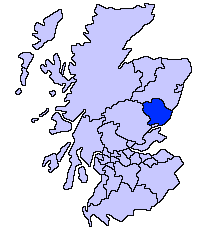
The process of scheduling is governed by the Ancient Monuments and Archaeological Areas Act 1979, which aims "to make provision for the investigation, preservation and recording of matters of archaeological or historical interest". The term "scheduled monument" can apply to the whole range of archaeological sites which have been deliberately constructed by human activity but are not always visible above ground. They range from prehistoric standing stones and burial sites, through Roman remains and medieval structures such as castles and monasteries, to later structures such as industrial sites and buildings constructed for the World Wars. Some buildings or structures which were both scheduled and listed have had their listing designations removed to reduce the duplication.
In 2017 there were 8238 scheduled monuments in Scotland, of which approximately 379 were in Angus.
Notable Scheduled Monuments in Angus
| Name | Location | Description | Ref No | Image |
|---|---|---|---|---|
| Colmeallie stone circle | Edzell | Recumbent stone circle | SM116 | 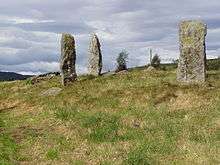 |
| Camus's Cross | Monikie | Pictish free-standing stone cross | SM148 | 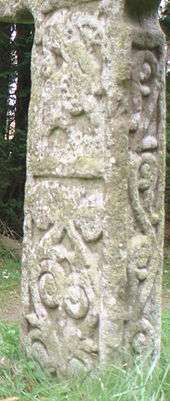 |
| Glamis 2 cross slab | Glamis | Pictish cross slab | SM152 | 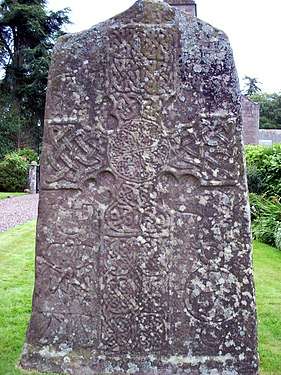 |
| Invermark Castle | Loch Lee | Rectangular tower house | SM2462 |  |
| Finavon Castle | Oathlaw | Remains of a fortified mansion | SM2464 |  |
| Red Castle | Inverkeilor | Ruined 15th-century castle | SM2925 |  |
| Nevay Church, church and burial ground | Eassie And Nevay | Remains of Nevay Church and its burial ground | SM3002 | 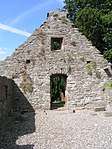 |
| Balkello standing stone | Tealing | Prehistoric standing stone | SM6145 | 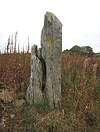 |
| Clova Castle | Clova, Angus | Remains of mediaeval Castle | SM6913 |  |
| Edzell Old Church and Lindsay Burial Aisle | Edzell | Buried medieval church and burial building | SM13613 |  |
| Aberlemno, cross slab and symbol stones | Aberlemno | Symbol stones | SM90004 | |
| Arbroath Abbey | Arbroath | Remains of Arbroath Abbey | SM90018 | 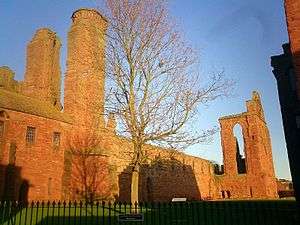 |
| Ardestie souterrain | Monikie | Prehistoric souterrain (earth-house) | SM90021 |  |
| Brechin Maison Dieu Chapel | Brechin | Site of the chapel of Maison Dieu hospital | SM90040 |  |
| Brechin Cathedral Round Tower | Brechin | Round tower | SM90041 | 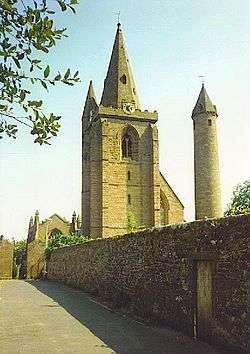 |
| Carlungie souterrain | Monikie | Prehistoric souterrain (earth-house) | SM90059 | 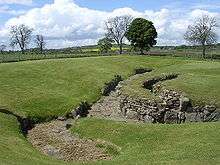 |
| Caterthuns | Menmuir | Two substantial hillforts | SM90069 | 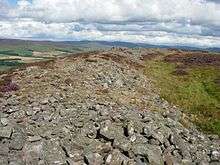 |
| Eassie Old Church and cross slab | Eassie | Ruined church and Pictish stone slab | SM90125 | 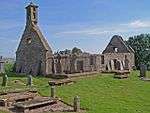 |
| Edzell Castle | Edzell | Ruined castle | SM90136 |  |
| Restenneth Priory | Forfar | Ruined medieval priory | SM90246 | |
| Tealing Dovecote | Tealing | Rectangular-shaped late 16th-century doocot | SM90298 | 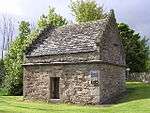 |
References
- "What is scheduling?". Historic Environment Scotland. Retrieved 2 September 2017.